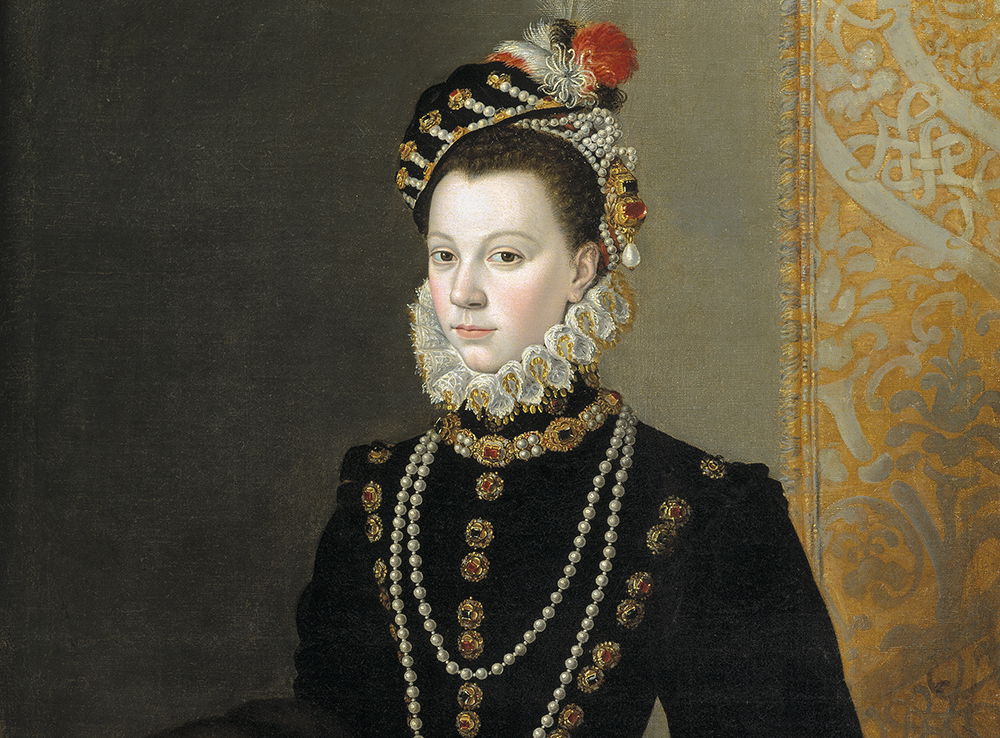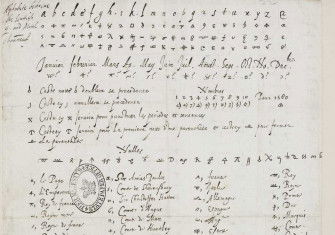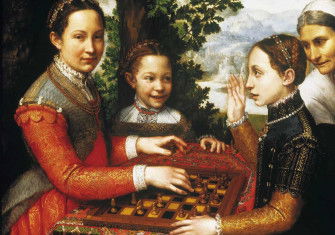Young Queens by Leah Redmond Chang review
Not every Renaissance queen was remarkable, but that does not make them insignificant.

On 4 September 1561, Mary, Queen of Scots met John Knox for the first time. Three years before, he had written the book widely known as the Monstrous Regiment, formally The First Blast of the Trumpet against the Monstrous Regiment of Women. In it, he had declared women ‘weak, frail, impatient, feeble and foolish … cruel and lacking the spirit of counsel and regiment’. He claimed its target had been the English and Catholic Mary Tudor. The Queen of Scotland was sceptical.
At the time of this meeting, Mary was just 18 to Knox’s 45. Her experience as a young queen navigating power, along with that of her first mother-in-law, Catherine de’ Medici, Queen of France, and Catherine’s daughter Elisabeth Valois, Queen of Spain, is the subject of Leah Redmond Chang’s book. It explores a 40-year period stretching from the young Catherine’s years as a hostage of Florence’s last republican government, to Elisabeth’s untimely death and Mary’s imprisonment. Catherine, the longest-lived of the three, is a presence throughout, switching from young queen to sometimes-overbearing mother figure. This is an intriguing approach to 16th-century queenship, an area that is hardly short of studies, and all the more so for its choice of subjects.
It is the nature of hereditary monarchy that the suitability of royal children as rulers or consorts is a lottery. Elizabeth I went her own determined way as the Virgin Queen, with remarkable success. In the 17th century, Queen Christina of Sweden abdicated and exiled herself to Rome where she became a patron of the arts and enjoyed multiple affairs. In the 18th, going one better, Queen Caroline didn’t abdicate, swanned off to the Med, hooked up with the low-born Milanese Bartolomeo Pergami, and still retained such popularity in England that George IV could not remove her title. These three young queens, however, are not the sort to tear up the rule book. Catherine, consort and regent of France, her daughter Elisabeth and daughter-in-law Mary dutifully marry and try their best (in trying circumstances) to bear the necessary children. As Chang admits, neither Elisabeth nor Mary had Elizabeth Tudor’s brilliance. Nor did they match Marguerite of Navarre’s literary accomplishments or Renée de France’s important patronage of Calvin. That does, however, give us a chance to find out what it was like to be a rather average woman thrust into a role for which you had to develop the aptitude swiftly or face trouble.
Among the challenges for Chang in writing this book is that the surviving sources make it much easier to reconstruct affairs of state than affairs of the heart. We get splendid accounts of ceremony, but for the most part we hear about a queen’s personal life when it impinges on the future of the realm – that is, when she’s pregnant, giving birth or, indeed, when she is not. ‘Elisabeth de Valois’ body’, writes Chang, ‘defined her’. The rare exceptions make for some of the most impressive moments in the book. Mary’s schoolroom letters to her ‘beloved sister’ Elisabeth, for example, written in an exercise book in between lessons on virtue from Cicero provides one. Catherine de’ Medici’s passive-aggressive emotional blackmail of Elisabeth offers another. On the whole, Chang avoids speculation. As a young mother, she writes, Catherine de’ Medici ‘knew the love and she knew the fear’. Catherine’s husband, Henri II, was ‘a wounded soul: a boy seeking his father’s respect and love’. Both are reasonable assumptions. Chang is honest about the places where the sources simply fail us, acknowledging, for example, that ‘we know hardly anything about Mary’s state of mind during the weeks following Darnley’s death’.
Even when the women do get involved in affairs of state, the propensity of the period for conveying the most important messages orally means that we never learn exactly how Catherine and Elisabeth managed their diplomatic talks, nor whether their tactics were substantially different from those a father and son might have deployed in a similar situation. We do learn that both Elisabeth and Mary, in different contexts, found advice and support from noblewomen and ladies-in-waiting. This caused problems when Elisabeth’s favourite, Madame de Vineux, threatened to supplant Madame de Clermont, who Elisabeth’s mother Catherine trusted to guide her. Later, isolated after her move to Scotland, the young Mary found herself lobbied by the Countess of Lennox to marry the countess’ son, Henry Darnley, only for him to prove a most unsuitable husband.
The Darnley match leads, as readers of Tudor history will know, nowhere good. Chang delivers a murderously climactic final act, telling the story of Mary, Darnley and Bothwell with aplomb. She equally delivers quieter, moving moments, not least the tale of Elisabeth’s mysterious illness, possibly the ‘greensickness’ that plagued young women in the 16th century. For all that this is a history book, however, it has present-day resonance too. There was plenty of debate about women’s place in society in the 16th century, and plenty of women pushing the boundaries (one of them, the artist Sofonisba Anguissola, appears briefly as Elisabeth’s lady-in-waiting). Yet if any of the queens had read Christine de Pizan, or knew of the querelle des femmes, we don’t hear about it. I was reminded of the Duchess of Sussex, who found that she had far more latitude in life as an actor than as British royalty, and of the deeply unpleasant attention that continues to be directed at young royal women, their bodies and their pregnancies. If only one of the young queens could have scooted off to the New World with a newfangled printing press and started a pamphlet series on ‘The Lady’s Well-Being in Mind and Body’. As Chang observes, however, in relation to Philip II’s decision to imprison his erratic and perhaps intellectually disabled son Don Carlos, when the roles of father and king are in tension, ‘the king must always take precedence’. That was just as true for these young queens.
Young Queens: Three Renaissance Women and the Price of Power
Leah Redmond Chang
Bloomsbury, 512pp, £25
Buy from bookshop.org (affiliate link)
Catherine Fletcher is the author of The Beauty and the Terror: An Alternative History of the Italian Renaissance (Bodley Head, 2020).






